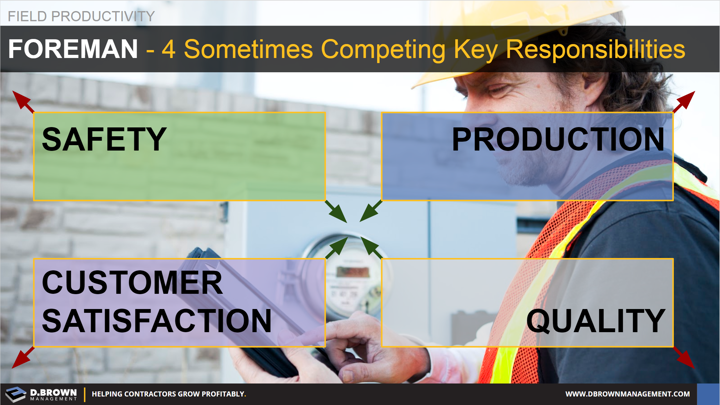There are four major responsibilities the foreman has that often seem to be competing with each other:
- Keep your team, yourself and others on the jobsite safe at all times. The foreman’s actions will dictate the safety culture. No risk is worth someone not coming home to their families happy and healthy as Jennifer Medrano reminds us with safety hand prints.
- Delight your customer. There are few things more profitable for a contractor than doing repeat business for a select group of customers. The foreman is the field ambassador for the company with everyone they work with on the project. Professionalism matters as Dennis Thomas outlines in this video.
- Install with the level of quality that the customer expects. Cutting corners never ends well in the long run.
- Meet the productivity goals in the budget and continually look for ways to improve the standard. No amount of growth can overcome consistently poor productivity and without profitability the business is not sustainable hurting everyone on the team.
There are two things that will 100% align all four of these responsibilities - planning & people. This is where the best foremen spend a lot of their time and where the industry has major gaps in training.
Improving Labor Productivity Workshop
5 Minute Foreman - Excellent book by Mark Breslin

